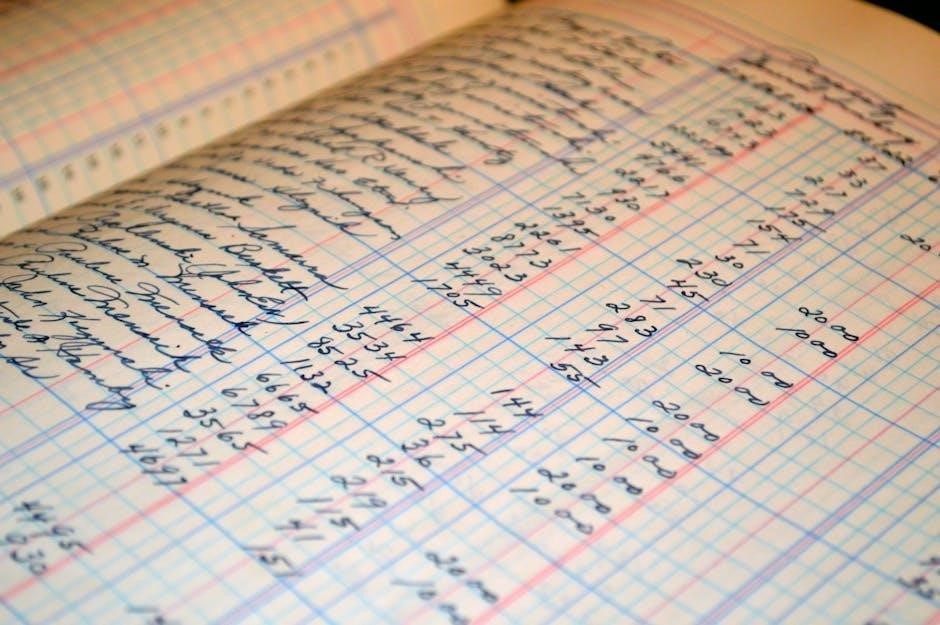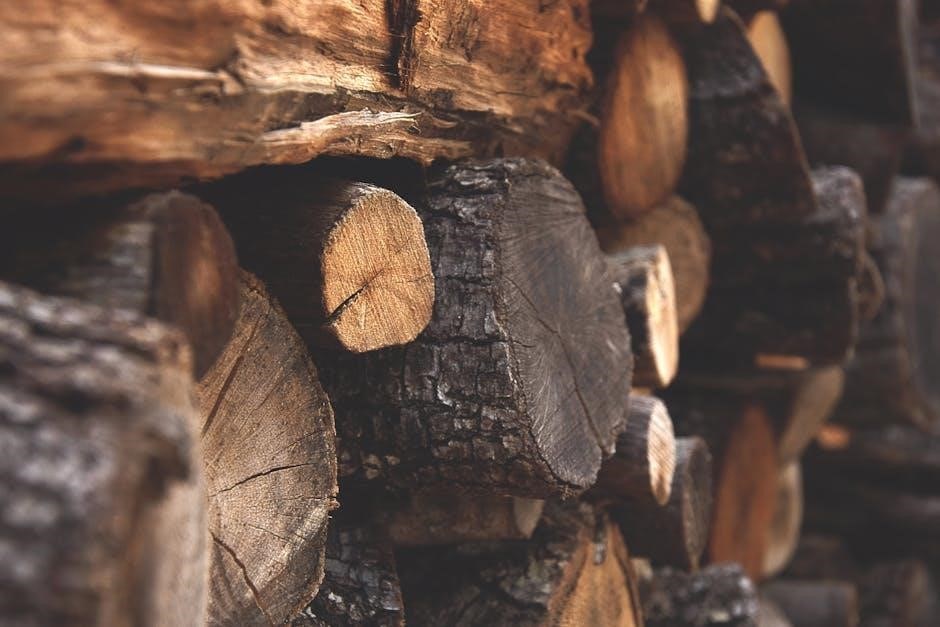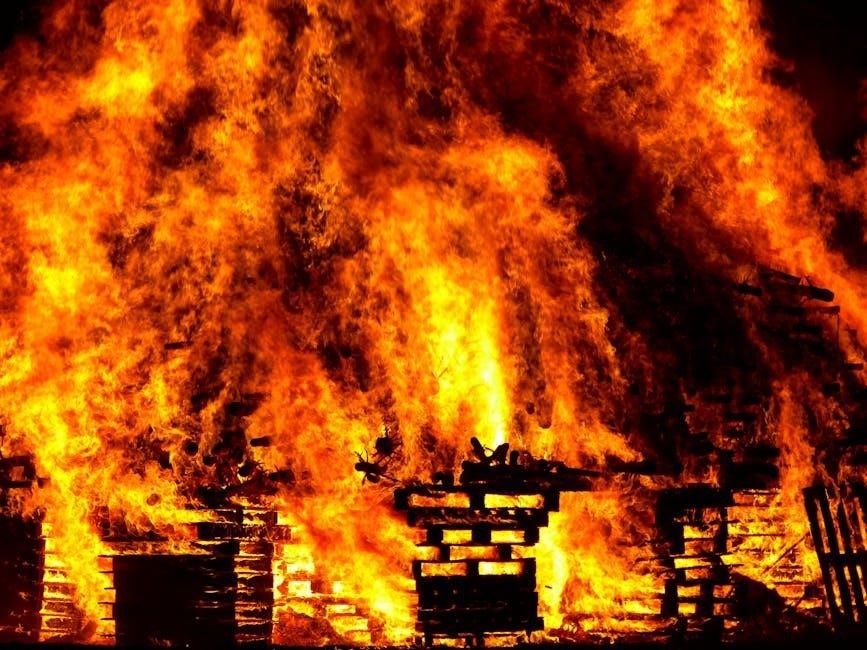
The firewood BTU chart pdf provides information on energy content of various firewood types, measured in British Thermal Units, helping users compare heat output and make informed decisions about fuel choices efficiently always․
Understanding BTU Output
To understand BTU output, it is essential to know that BTU stands for British Thermal Unit, which is a unit of measurement used to quantify the amount of energy required to heat one pound of water by one degree Fahrenheit․ The BTU output of firewood is a crucial factor in determining its heat energy content․ A higher BTU output indicates that the firewood can produce more heat, making it a more efficient fuel source․ The BTU output of firewood is typically measured using a moisture content of 20%, as this is considered the optimal moisture level for burning firewood․ By understanding BTU output, users can compare the heat energy content of different firewood types and make informed decisions about their fuel choices․ This information is particularly useful for individuals who rely on firewood as a primary source of heat, as it allows them to optimize their fuel consumption and reduce their energy costs․
Importance of Measuring Firewood Energy Content

Measuring firewood energy content is crucial for several reasons, including optimizing fuel consumption and reducing energy costs․ By knowing the energy content of firewood, individuals can determine the amount of heat they can expect to produce, allowing them to plan their fuel needs accordingly․ This information is also essential for comparing the energy content of different firewood types, enabling users to make informed decisions about their fuel choices․ Additionally, measuring firewood energy content helps to ensure that the firewood is burned efficiently, reducing the risk of air pollution and minimizing the environmental impact of firewood burning․ The energy content of firewood is typically measured in British Thermal Units (BTUs) per cord, providing a standardized unit of measurement that allows for easy comparison between different firewood types; This information is readily available in firewood BTU charts, making it easy for users to access and utilize․

Firewood BTU Ratings Charts
Firewood BTU ratings charts provide comparative data on energy content of various firewood types always using British Thermal Units efficiently online․
Comparison of Heat Energy Content in Different Tree Species
The comparison of heat energy content in different tree species is a crucial aspect of understanding firewood BTU charts․ According to various studies, different tree species have varying heat energy content, measured in British Thermal Units (BTU)․ For instance, hardwoods like oak and maple tend to have higher BTU ratings than softwoods like pine and fir․ This variation in heat energy content is due to the difference in density and moisture content of the wood․ Some tree species, like hickory and beech, are known to have high BTU ratings, making them ideal for firewood․ On the other hand, species like aspen and poplar have lower BTU ratings, making them less desirable for firewood․ By comparing the heat energy content of different tree species, individuals can make informed decisions about the type of firewood to use for their heating needs․ This information is essential for maximizing efficiency and minimizing costs․
Factors Affecting Firewood BTU Ratings
Several factors can affect firewood BTU ratings, including moisture content, density, and resin levels․ Moisture content is a significant factor, as high moisture levels can lower the BTU rating of firewood․ Density also plays a role, as denser woods tend to have higher BTU ratings․ Resin levels can also impact BTU ratings, as some tree species with high resin content may have lower BTU ratings․ Additionally, the way firewood is seasoned and dried can also affect its BTU rating․ Properly seasoned firewood can have a higher BTU rating than green or wet firewood․ Other factors, such as tree species, age, and growing conditions, can also impact firewood BTU ratings․ Understanding these factors is essential for accurately determining the energy content of firewood and making informed decisions about its use․ By considering these factors, individuals can optimize their firewood usage and maximize its heating potential․ This information is crucial for effective firewood management․

Firewood Measurements and Cost
Firewood cost is calculated based on volume, typically measured in cords, with prices varying depending on location and supplier always using standard units of measurement efficiently online․
Understanding Cord Wood Measurements
A cord of wood is a unit of measure that represents a stack of wood that is 4 feet high, 4 feet wide, and 8 feet long, totaling 128 cubic feet of space․ This standard measurement allows consumers to compare prices and quantities of firewood from different suppliers․ The volume of a cord can vary depending on the size and shape of the individual pieces of wood, as well as how tightly they are stacked․ To ensure accurate measurements, firewood should be stacked in a way that allows for minimal empty space between the logs․ The weight of a cord of wood can also vary significantly, depending on the type and moisture content of the wood․ Understanding cord wood measurements is essential for making informed purchasing decisions and ensuring that you get the amount of firewood you need to meet your energy requirements․ The measurement is used to calculate the cost of firewood․
Comparing Firewood Cost to Other Fuels
Comparing the cost of firewood to other fuels is an important consideration for those looking to heat their homes or businesses․ The cost of firewood can vary significantly depending on the type and quality of the wood, as well as the location and supplier․ In general, firewood can be a cost-effective option, especially for those who have access to a steady supply of wood․ When compared to other fuels such as fuel oil or natural gas, firewood can be a more stable and predictable cost․ The cost of firewood is typically measured in dollars per cord, while other fuels are measured in dollars per gallon or therm․ By using a firewood BTU chart, consumers can compare the energy content of different types of firewood and make informed decisions about which type to purchase․ This can help to ensure that they are getting the best value for their money․ The cost comparison can be done using online tools and resources․

Guide to Purchasing Firewood
Purchasing firewood requires evaluating quality, moisture content, and energy content to ensure efficient burning and value for money spent on fuel always using online resources and charts available․
Evaluating Firewood Quality and Moisture Content
To evaluate firewood quality, it is essential to consider the moisture content, as it significantly affects the burning efficiency and heat output․ The ideal moisture content for firewood is between 15% to 20%, as it allows for efficient burning and minimal smoke production․ Firewood with high moisture content can produce less heat and more smoke, making it less desirable․ On the other hand, firewood with low moisture content can burn too quickly, reducing the overall burning time․ Evaluating the quality of firewood also involves checking for any signs of rot, mold, or insect infestation, which can affect the burning efficiency and safety․ By considering these factors, individuals can make informed decisions when purchasing firewood and ensure they get the best value for their money․ Proper evaluation of firewood quality and moisture content is crucial for a safe and efficient burning experience․ Additionally, using a firewood BTU chart can help individuals compare the energy content of different firewood types․
Importance of Air Drying Firewood
Air drying firewood is a crucial step in preparing it for burning, as it helps to reduce the moisture content and increase the energy density․ This process involves stacking the firewood in a way that allows air to circulate around each piece, helping to evaporate the moisture․ Air drying firewood for at least six months can significantly improve its quality and burning efficiency․ During this time, the moisture content can decrease from 30% to 15%, making it more suitable for burning․ Properly air-dried firewood burns more efficiently, produces less smoke, and generates more heat․ It is also less likely to produce creosote buildup in chimneys and flues․ By air drying firewood, individuals can ensure a safer and more efficient burning experience, and get the most value out of their firewood․ This simple step can make a significant difference in the overall quality and performance of the firewood․